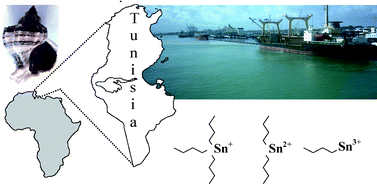First record of butyltin body burden and imposex status in Hexaplex trunculus (L.) along the Tunisian coast
Abstract
We have assessed for the first time the current status of tributyltin (TBT) contamination in Hexaplex trunculus along Tunisian coastal waters. Two sampling campaigns have been performed in July 2004 and July 2007 at seven different sites. The snails were analyzed for imposex status, i.e. Imposex incidence, Relative Penis Length Index (RPLI) and Vas Deferens Sequence Index (VDSI), followed by the quantification of butyltins in their tissues. Imposex was detected in six populations from the 2004 samples and in five populations from the 2007 samples. The imposex incidence ranged from 0 (no imposex) to 100%, the RPLI from 0 to 56.7 and the VDSI from 0 to 4.4. TBT was also detected in six populations in 2004 and five populations in 2007. The concentrations ranged from 1.5 to 73.7 ng Sn g−1 dw in 2004 samples and from 1.2 to 23.9 ng Sn g−1 dw in 2007 samples. Temporal comparison of the data indicates some evidence of imposex recovery in most affected populations. Improvements in reduced body concentrations of TBT in both sexes were also seen in most stations. These TBT concentrations were only significantly correlated to imposex indices in samples from 2007 (r > 0.8, n = 7, p < 0.05). The present results will serve as a reference for long-term monitoring of butyltin contamination in the Tunisian coast, where TBT restrictions were not yet implemented.


 Please wait while we load your content...
Please wait while we load your content...